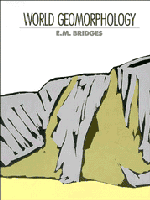8 - Europe
Published online by Cambridge University Press: 05 June 2012
Summary
Traditionally Europe is regarded as a separate continent although it is in fact only a peninsula of peninsulas extending west from Asia. The Ural mountains are the accepted eastern boundary of Europe which has an area of 10.4 million km2. It extends 3500 km north to south from latitude 73°N on the shores of the Arctic Ocean to latitude 36°N on the Mediterranean Sea, and 4500 km east to west from 60°E to 10°W in longitude. The highest peak within Europe is Mont Blanc (4807 m) but on the boundary of Europe as considered here, Mount Elbrus in the Caucasus reaches 5642 m.
The boundaries of the lithospheric plate occupied by Europe are difficult to draw. The southern margin of the Alpine folding is a logical structural boundary, but this would include the Mahgreb lands of North Africa. The rest of the Alpine folding lies on the northern shores of the Mediterranean, but the boundary is complicated by the structure of the Mediterranean basin, the presence of a spreading centre south of Crete and the presence of the micro-plates of Italy–Yugoslavia and Turkey. The western boundary may sensibly be described as the mid-Atlantic ridge, a constructive margin which extends from the Azores northwards through Iceland and around Spitzbergen into the Arctic Ocean.
The mean elevation of Europe is 300 m above sea level and 31% of the continent is in the form of depositional plains, 30% erosional plains and plateaux in sedimentary rocks.
- Type
- Chapter
- Information
- World Geomorphology , pp. 188 - 240Publisher: Cambridge University PressPrint publication year: 1990

